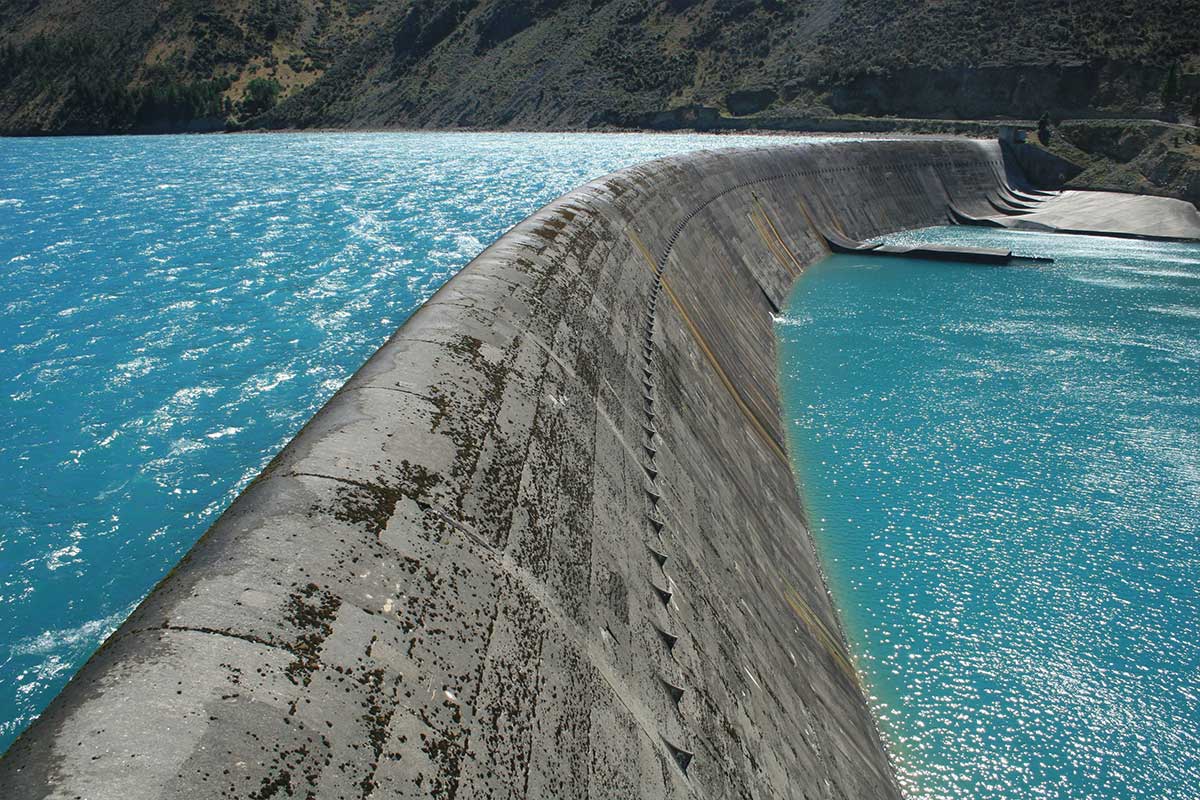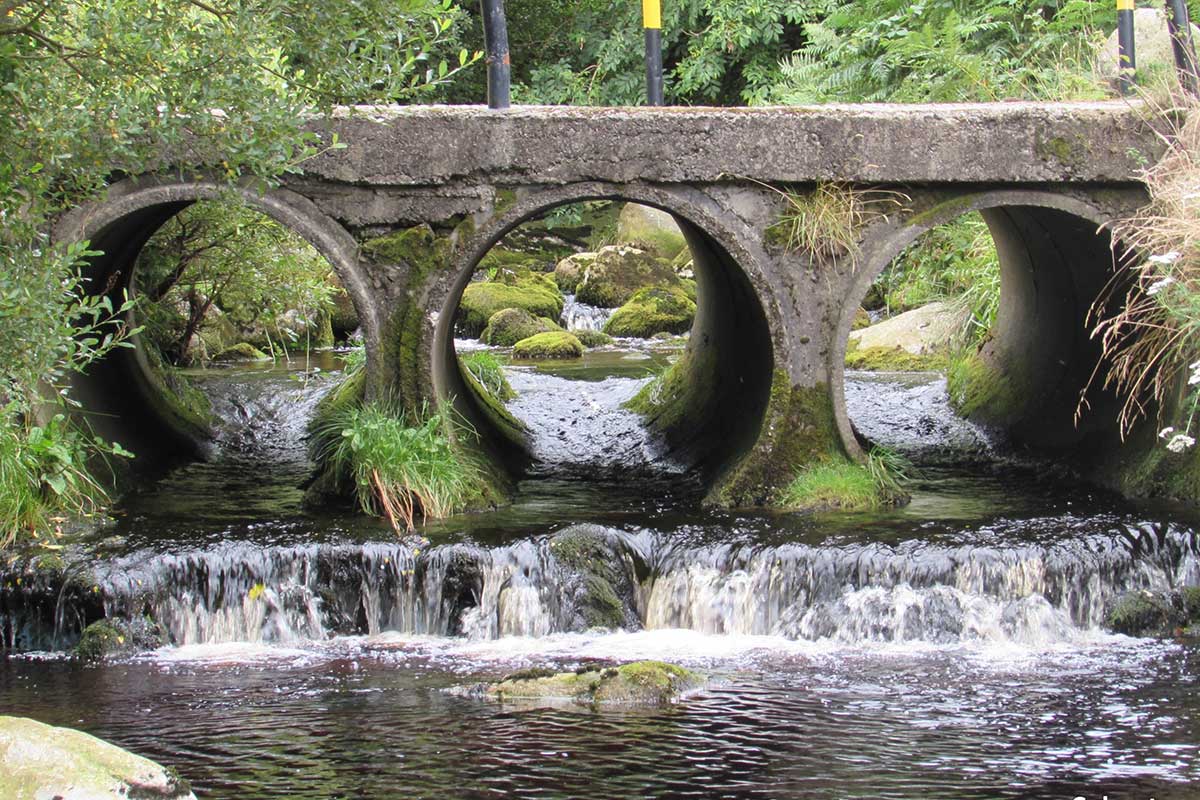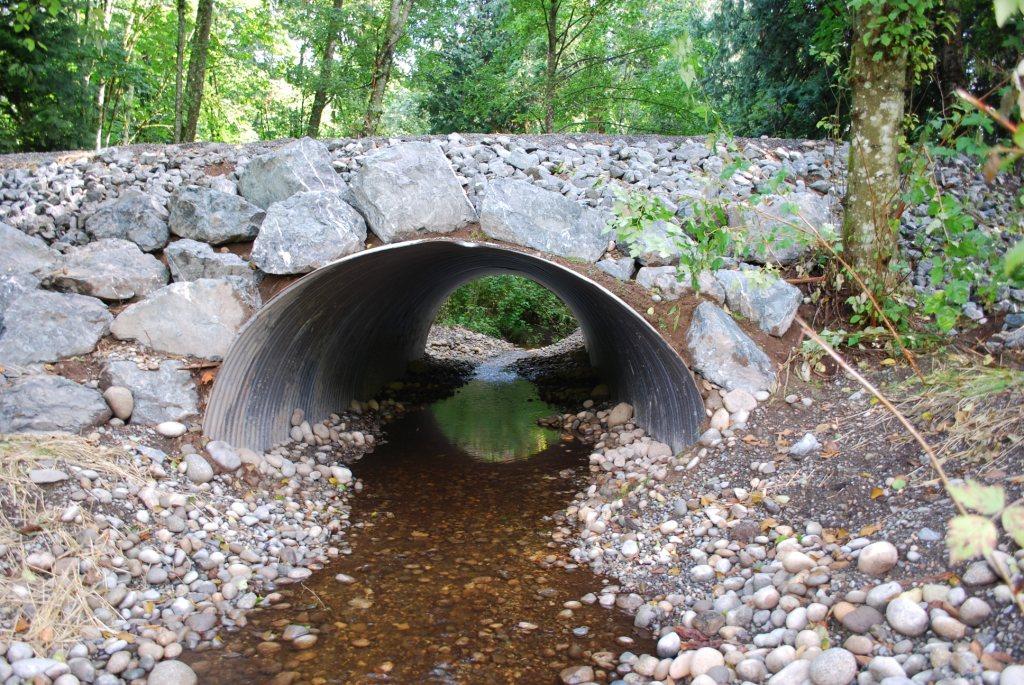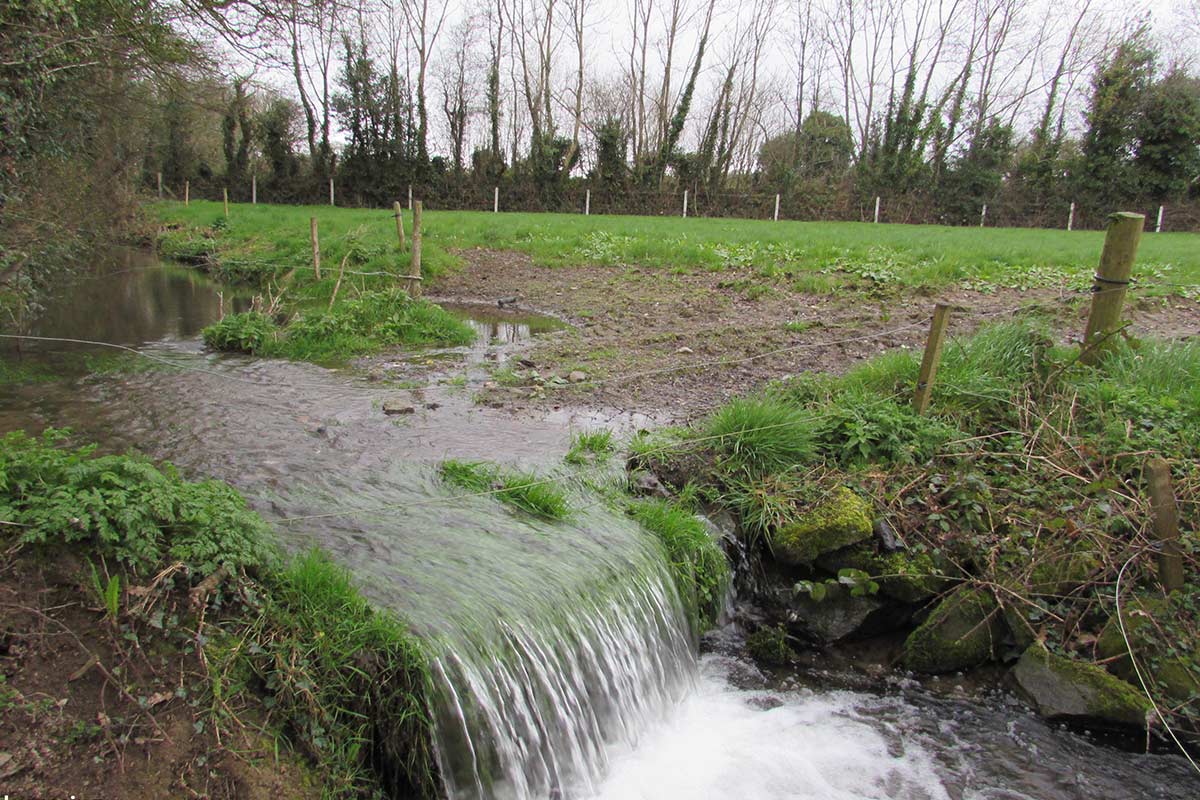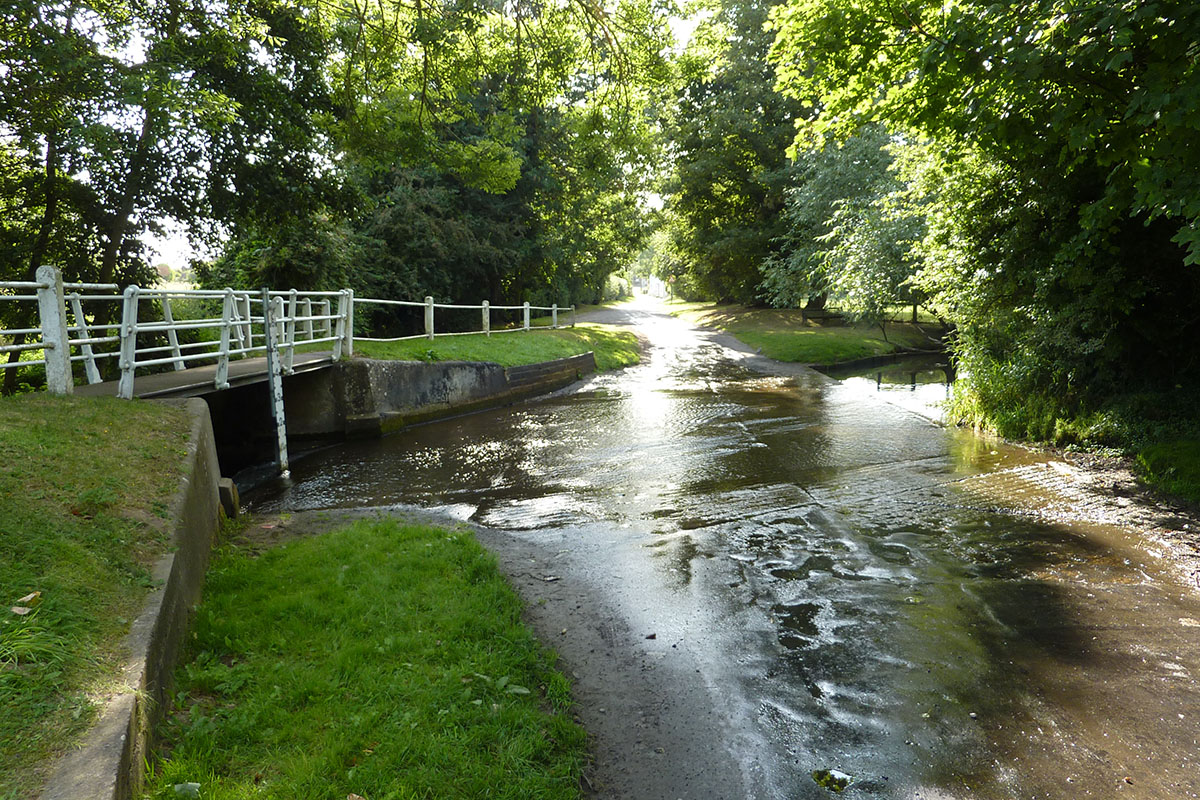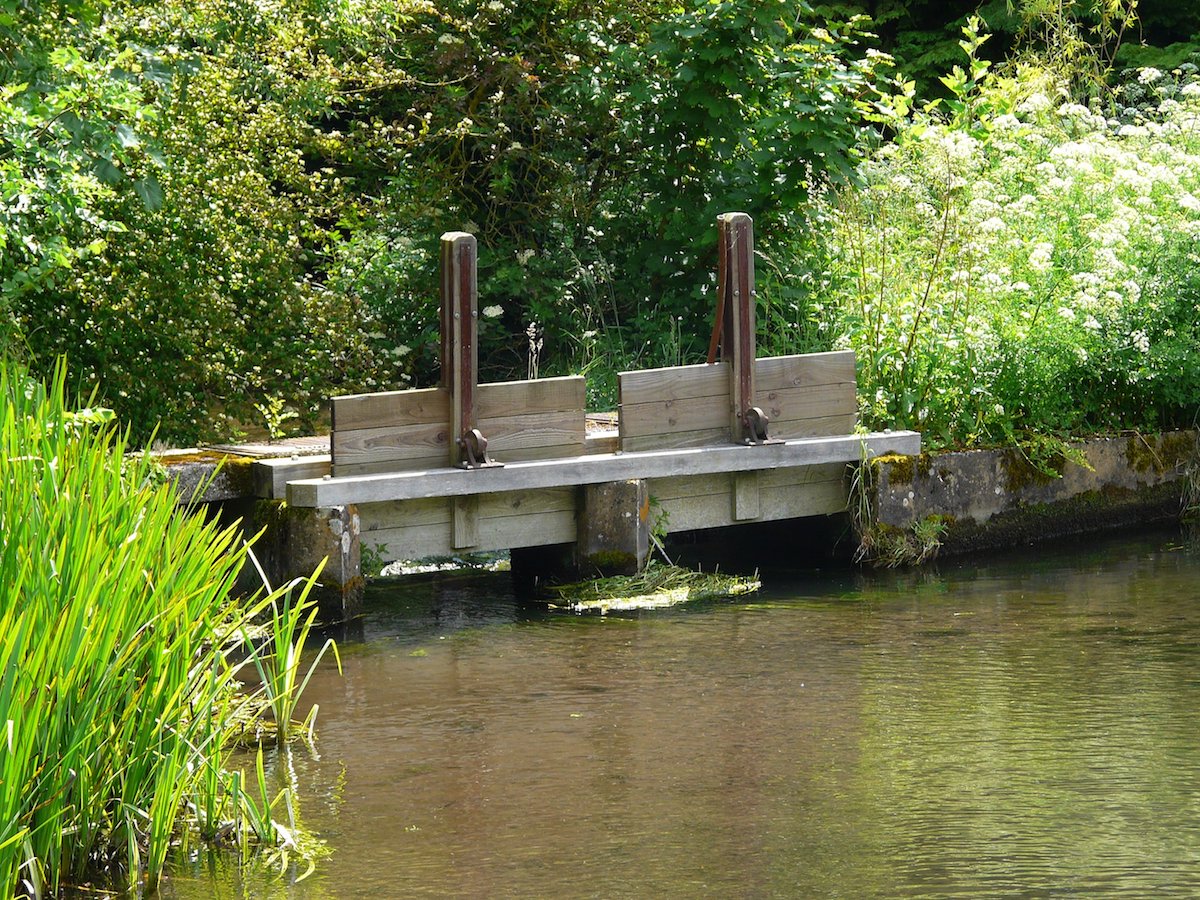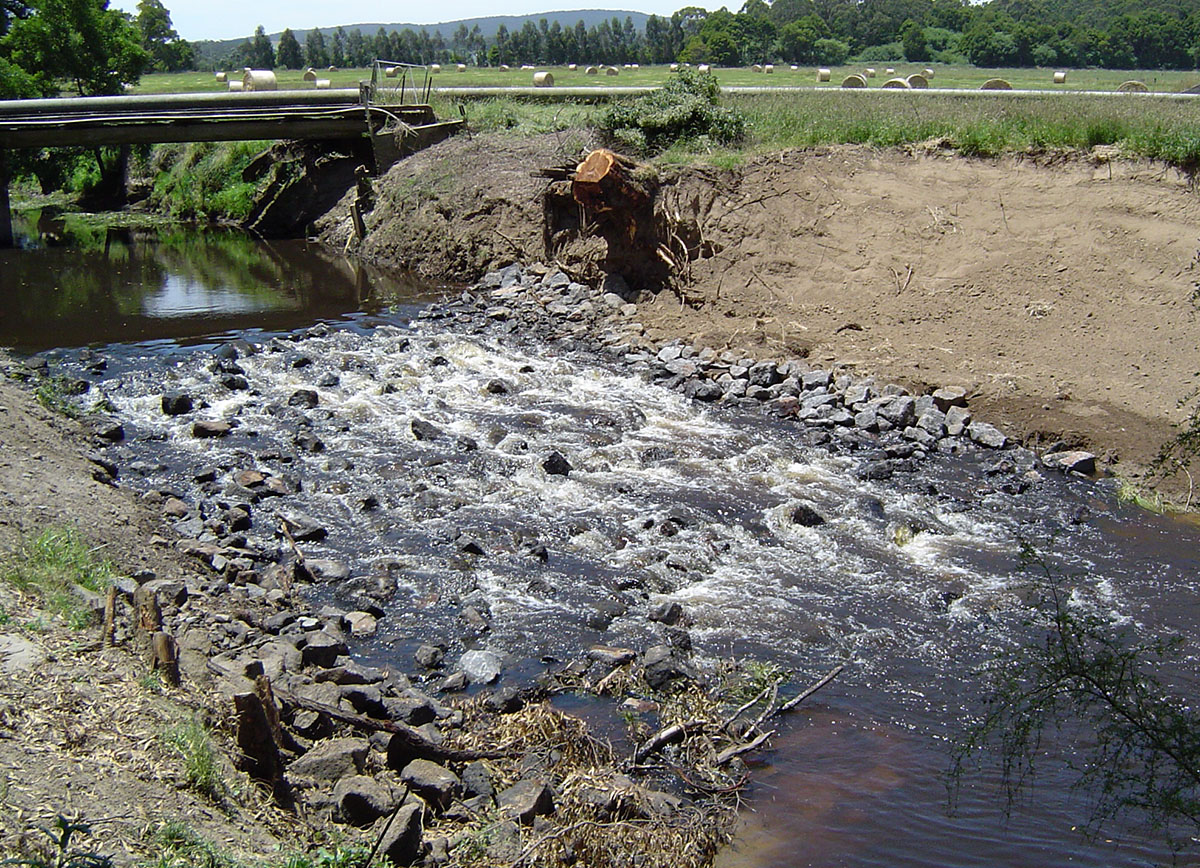Weir

A weir is a barrier aimed at regulating flow conditions and water levels or at intercepting sediment or at reducing the channel slope for stabilizing the channel bed of a river or stream. Water often flows freely over the top of a weir.
Weirs come in many shapes and sizes but often have a height of less than 5 meters.
Sluice

A sluice is a movable barrier aimed at controlling water levels and flow rates in rivers and streams. By opening or closing the sluice, water levels and flow rates can be altered.
Sluices come in many shapes and sizes. Coastal sluices drain river water into sea during low tides.
In addition, sluices are also used in ship locks, to allow ships to navigate past dams or other obstructions.
Ramp

A ramp or a bed sill is a structure aimed at stabilising the channel bed and reducing erosion.
These structures come in many forms. Most are underwater structures (i.e. not blocking the flow of water, only acting on river bed and channel slope). They often have a height of less than 1-2 meters.


